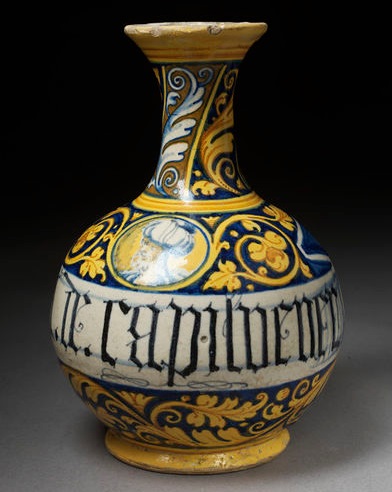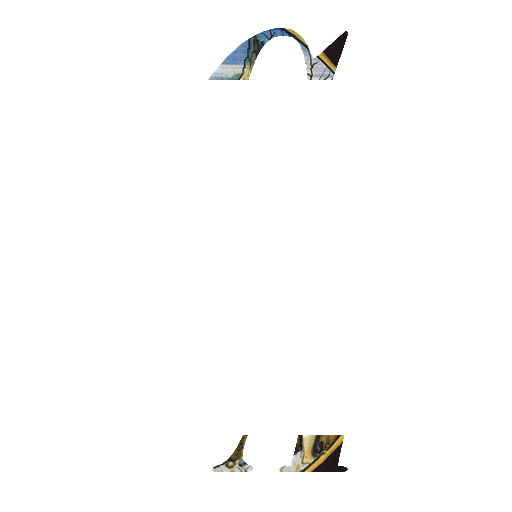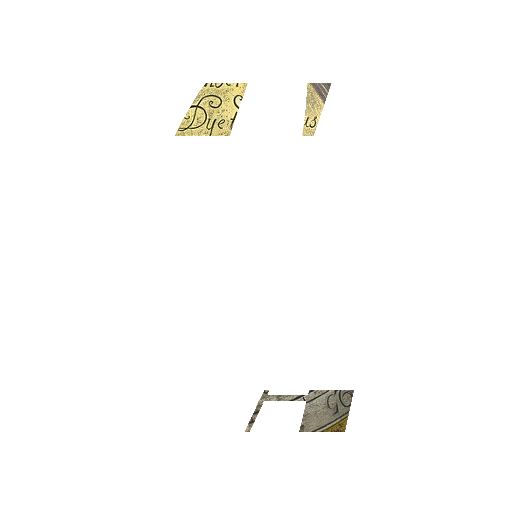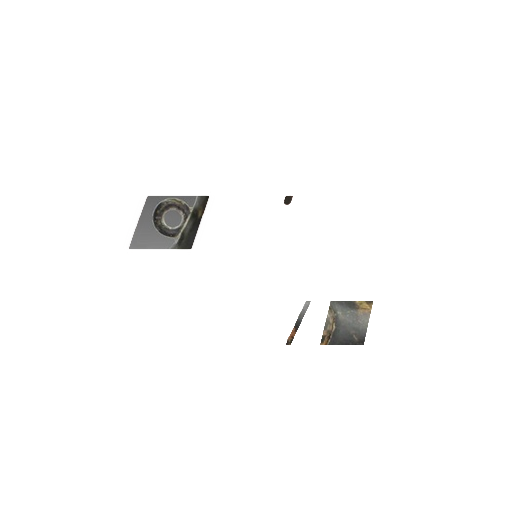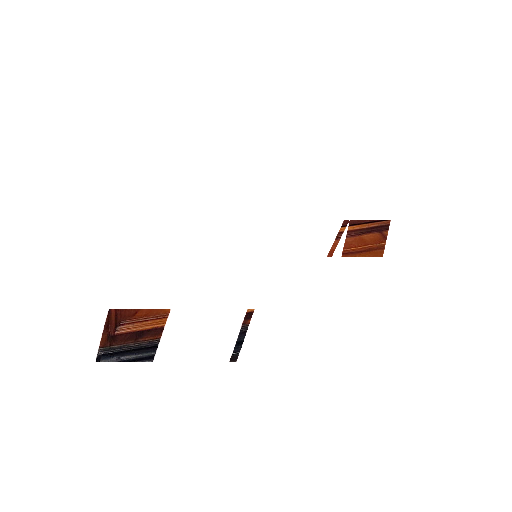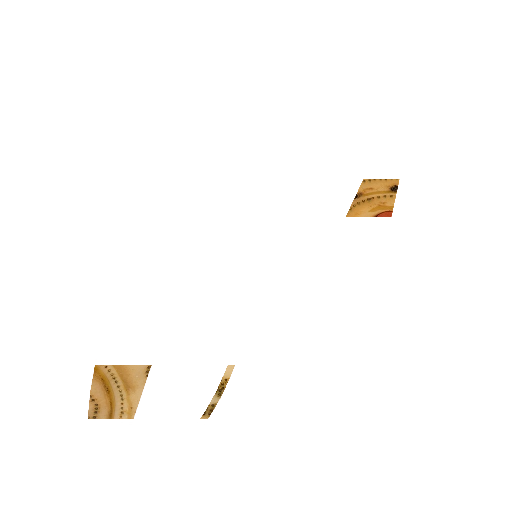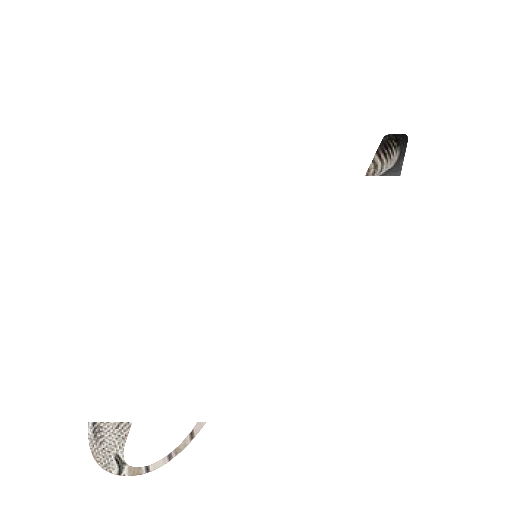Faenza majolica, majolica also spelled Maiolica, tin-glazed earthenware produced in the city of Faenza in the Emilia district of Italy from the late 14ᵗʰ century.
Early Faenza ware is represented by green and purple jugs decorated with Gothic lettering and heraldic lions and by Tuscan oak leaf jars. The first significant majolica piece, a wall plaque, is dated 1475. Typical Renaissance motifs appear on 15ᵗʰ century ware, the colours of which include clean dark blues, a rich orange, and a copper green. Vases with a peacock-feather design and ware incorporating wavy rays are characteristic of Faenza, as is a form of globular two-handled jar. Later a light blue (berettino) ground was popular.
In the early 16ᵗʰ century the istoriato style of decoration (history painting, or scenes from the Bible, mythology, and legend) became popular at Faenza. The finest wares produced by the factory date from the last quarter of the 15ᵗʰ century to about the mid-16ᵗʰ century.
Much Faenza ware was exported, and the term faience, probably from the French for Faenza, came to be used for tin-glazed earthenware made in France, Germany, Spain, and Scandinavia.
Scarcely any one now contends that Fayence in the Var, a few miles from Cannes, gave its name to faience, nor is it certain that the word was derived from Faenza. We do know that the old French word faience included all kinds of glazed earthenware crockery, and we leave it so As early as the 15ᵗʰ century the whiteness and brilliance of the glaze of the earthenware of Faenza had attracted attention; then the patronage of the Manfredi family was extended to the manufacture. This ceased in 1501, when the general progress in the fine arts in Italy extended to the fabriques at Faenza, to which are ascribed a large number of marks of artists about whom little or nothing is known.
" Fato in Faenza in caxa Pirota " is a mark which indicates one fabrique, Casa Pirota, the most important in the old town of Faenza. There the marked character of the decoration, the wide borders ornamented with grotesques, reserved in white and shaded in yellow on a pale-blue ground, in the style known as a berettino, or reserved in grey heightened with white on a dark blue ground, known as sopra azzuro, were associated with a mark, on the reverse, of a crossed circle enclosing a dot or a crescent, or both. This is the mark of the fabrique where the pieces produced fall into three classes, which may have been the work of three different masters, still unknown by name. The first type is that ornamented with grotesques and central subjects painted in brownish yellow. The second has the grotesque borders in a lighter tone heightened with white, having central subjects painted in greenish-yellow. To this belong some fine plaques of which one in the British Museum is dated 1527, with B.B.F.F on a yellow roundel at the back. The third used the same initials in work which embodied the richest colouring and the most admirable design.
Most of these pieces bear on the reverse either concentric rings in blue, or blue lines separated by other concentric rings in orange. Again, a large number of plates, dishes, and vases of the same origin are ornamented with a mask, having a long head, and a beard spreading into acanthus leaves, from which arises foliage of elegant form and delicate design. Baldasara Manara signed some pieces of Faenza ware with his full name, notably a service decorated with orange scale work on the yellow ground of the reverse. A tazza from this service was in the Fortnum Collection, and another piece, a plate now in the Victoria and Albert Museum, bears the initials B.M. Manara was working in 1536, probably in a botega which was not the Casa Pirota. Still another botega is credited to Faenza as producing the service in the Museo Correr at Venice, about which Fortnum writes: " No wares of the period could in their qualities of enamel be more worthy of the expression bianclae polite than the pieces of this service. We have no clue to the name of the painter . . . but there is a great similarity in their glaze and other details to the pieces painted by another excellent hand who signs with the letters F.R."
At the Cluny Museum in Paris are several marked pieces, notably a cup or goblet with a white ground painted with an equestrian figure and a border of arabesques on a yellow ground, marked on the reverse with IN FAENZA; a round dish decorated with garlands and blue flowerets on a white ground, and in the centre painted with two hands joined with the device Sola fides. On the bottom is the mark FA; and a pair of pharmacy jars, decorated with arabesques on an orange ground, one marked FAENZA and the other dated 1500.
Moulded pieces or scannellati were made at Faenza and at Caffaggiolo, The former were characterised by greater rigidity of modelling, by the use of darker blue in shading and outline, and a freer application of the yellow and orange colours. The latter were more Italian and less German in feeling; the greater brilliancy of the blue, the thicker, richer glaze, and the purple amongst the colours give other differences. At the same time we must remember that during the 16ᵗʰ century it was customary to cover the whole surface of the piece with painting (istoriata) so that it is far from easy to distinguish the unsigned works of the various fabriques. Many of the artists of the first rank have left no records by which their admirable paintings may be identified, and many more have been content with an occasional monogram or a date. A modern fabrique at Faenza produces poor imitations of the old majolica.
A FAENZA MAIOLICA EWER
Emilia-Romagna (Faenza c1531)
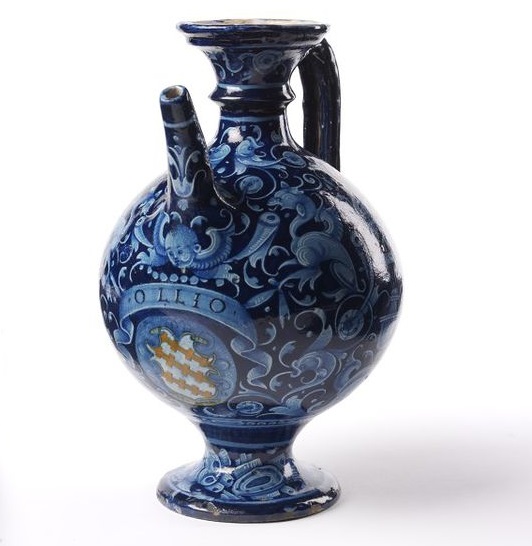
A FAENZA MAIOLICA PLATE
Emilia-Romagna (Faenza c1534)
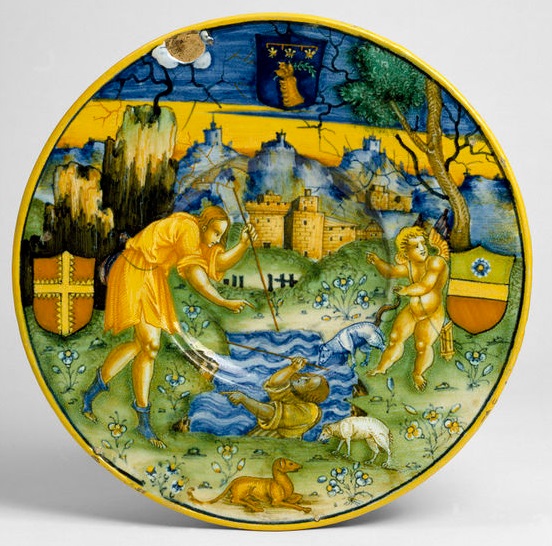
A FAENZA MAIOLICA PLATE
Emilia-Romagna (Faenza c1425-c1450)
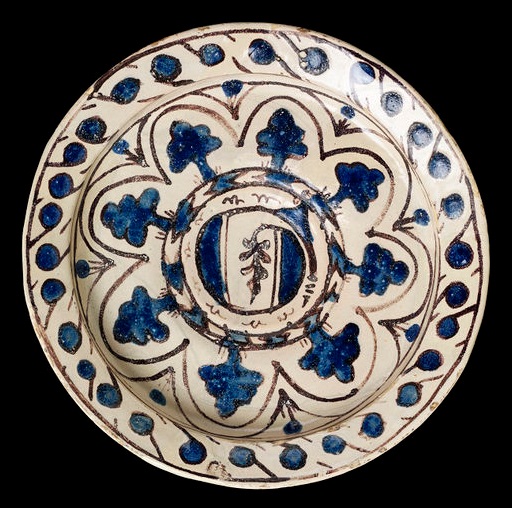
A FAENZA MAIOLICA HANDLED JUG
Emilia-Romagna (Faenza c1410-c1420)
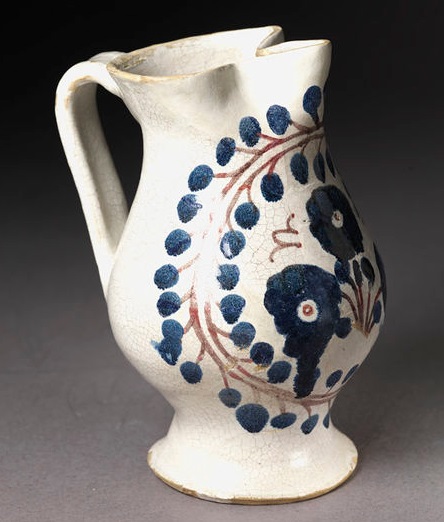
A FAENZA MAIOLICA HANDLED JUG
Emilia-Romagna (Faenza c1480-c1500)
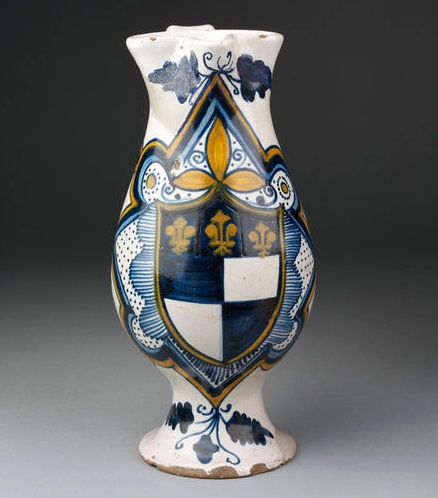
A FAENZA MAIOLICA DRUG VASE
Emilia-Romagna (Faenza c1500)

A FAENZA MAIOLICA DISH
Emilia-Romagna (Faenza c1560-c1570)
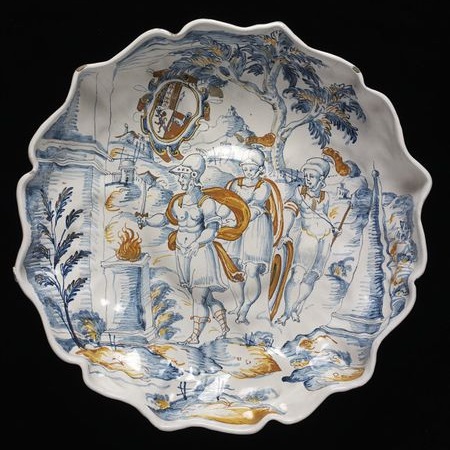
A FAENZA MAIOLICA DISH
Emilia-Romagna (Faenza c1560-c1570)
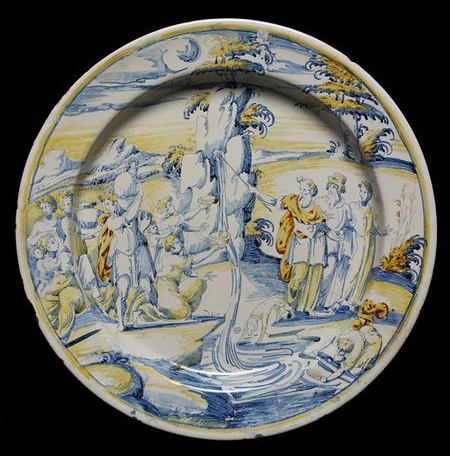
A FAENZA MAIOLICA SALT CELLAR
Emilia-Romagna (Faenza c1650)
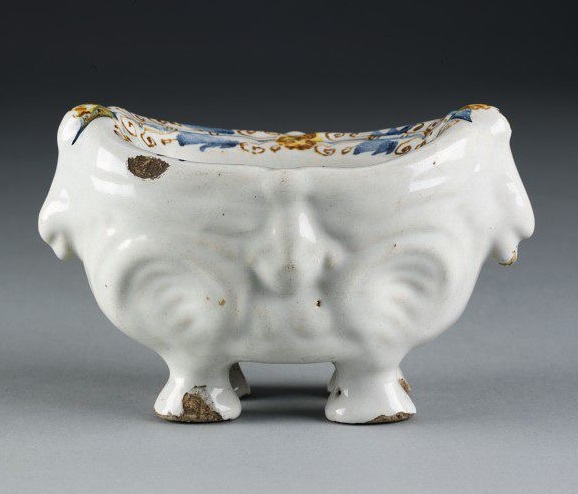
A FAENZA MAIOLICA DRUG JAR
Emilia-Romagna (Faenza c1550)
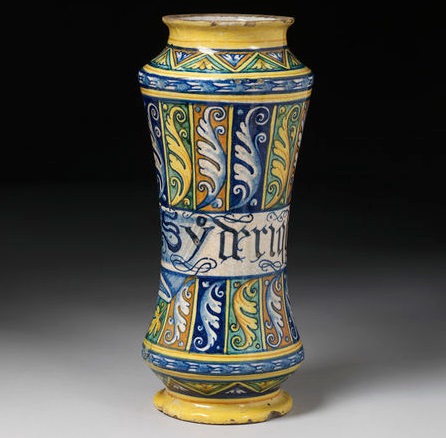
A FAENZA MAIOLICA DRUG BOTTLE
Emilia-Romagna (Faenza c1550-c1575)
